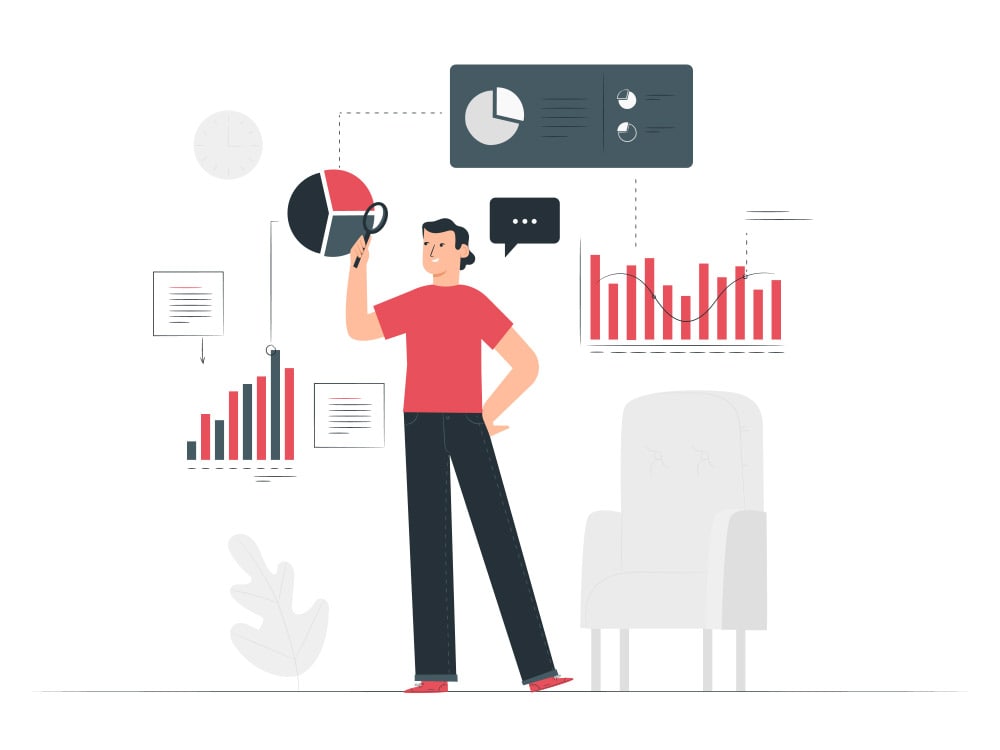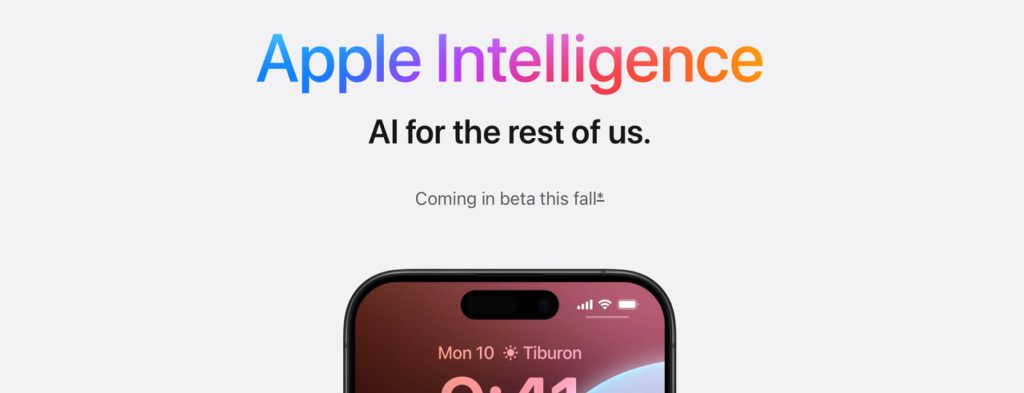Today, data analytics has earned great value and recognition as an aid to business growth. Every business has a purpose to be achieved. This purpose and the end-result of all business efforts are realized by data analytics.
There is a whole lot of data available all around, but extracting the one suitable for our needs, is the biggest challenge. Right from the first stage of business that is user-requirement analysis, we need to gather, compile, and rightly make use of this data. Once we have the right data, it is also important to convert it into an easily comprehensible form for our business needs. Data analytics tools help us achieve this with ease. The better these tools are, the easier our job becomes.
Today, these tools incorporate machine learning and artificial intelligence to not only provide insight into the current user behavior but also provide predictive analysis.
Data analytics is a complex technique of extracting, grouping/sorting, and compiling data with an aim to better create and decipher user behavior patterns. For example, for a management survey project, we create survey forms, collect data, and then group data as per our specific project needs. We then create graphs and charts to explain our analysis. When the data volume is large and data is very complex, data analytics tools can do this for us.
Best Data Analytics Tools
The selection of the right data analytics tool is not easy. But, the factors you may consider in this selection are your budget, ease of learning based on the human resource your business has, and the specific analytic features that your business needs.
To help you get introduced, here is a list of some popular data analytics tools to choose from, along with their important traits.
1. Power BI
Power BI by Microsoft is an easy-to-use data analytics tool. It can manage very large amounts of data in very less time easily. It allows the users to visually explore and analyze the data in one view, both on-premise or on-cloud.
Power BI helps users create analytics models automatically with its very simple data modeling and point-and-click analysis interface. You can get quicker analytical insights with its AI-assisted visualizations. It offers an endless number of visualization options with its open framework that can generate custom visuals and has 100+ visuals contributed by community users. It manages all your governance and security needs.
2. Zoho
Zoho analytics tool offers analytics both on-premise and on-cloud. Insightful dashboards help create visually appealing data visualizations in the least timeframe.
Users can handle huge amounts of data and convert it to actionable reports very easily with its drag-and-drop designer. Zoho data analytics offer key business metrics, insights, and long-term trends.
Zoho also has the provision of a virtual assistance Zia that leverages AI, ML, and natural language processing technologies to solve user queries.
3. Oracle Analytics
Oracle Analytics provides an intuitive dashboard that eases data preparation and helps you generate a personalized view in one place according to users’ specific needs. It enables tailored analytics with its prebuilt analytic data models that enable freedom of analysis within the governance framework.
Oracle Analytics is preferred for its security and scalability features. It offers high-precision predictive analytics and conversation-style analytics by leveraging cutting-edge technologies to include AI, ML, natural language processing, and natural language generation to provide conversation style analytics.
4. Splunk
Splunk is massively scalable, easy to deploy and use. It helps monitor data and get real-time alerts. It identifies specific behavior patterns for predictive analysis. It offers secure data handling, role-based access controls, and data integrity.
It identifies and reports process failures and delays, thus helping the user take timely action to prevent the damages resulting from the same.
5. QlikView
QlikView is an easy-to-learn data analytics tool with a simple UI. It helps gather, search, and visually analyze data with ease to generate business insights.
With its in-memory architecture, it can handle loads of data and stores it in memory. This data is thus available for instant search and real-time analysis in just a few clicks.
QlikView offers an amazing UX for both ad hoc and advanced users. The users can even share the dashboard with other users (even those without a license) for an analysis session. It allows personalized or role-based access control where different users can be assigned access to specific information, as needed.
6. RapidMiner
RapidMiner is an open-source analytics tool. It offers compatibility with almost all popular data source types. It can combine and analyze very large volumes of data in very little time. Thus, it provides a very fast predictive analysis.
It also helps identify potential anomaly and risks, thereby reducing the uncertainty of outcomes and losses. Apart from predictive analysis, it finds its use in data preparation and mining, text mining and analytics, deep learning and machine learning, and visual analytics. It offers us control over the formats and data sets for predictive analysis
7. KNIME
KNIME is a free, open-source reporting and integrated analytics tool. It aids in data mining, data cleaning, and machine learning. It helps derive statistics for correlation analysis and uses statistical tests for validation.
It helps the analysts aggregate, sort, filter, extract, and select features for data in local machine or database or even big data environment.
8. Tableau Public
This is a free, open-source tool. Tableau also has paid versions, with added features. But, the free version Tableau Public is also considered among the best in the market for visual analytics or data visualization.
Being open-source and having been improved over the years after a lot of research, it offers the perfect user interface design. There are extensive, free training resources available for Tableau Public, making it easy to learn and use.
9. Excel
Excel by Microsoft, is one of the most popular and widely used data analytics tools in the market. It is also used in collaboration with many other analytics tools by most businesses. It is easy to use and there are enough online help resources available for learning its features and using these effectively.
It provides a range of filtering options, pivot tables, charts (line, bar, and pie), histograms, and scatter plots. It has a very high potential if leveraged well.
10. SAS
SAS offers a wide range of analytics tools, to include data mining, statistical analysis, forecasting, text analytics, optimization and simulation, and big data predictive analysis.
SAS has a large array of statistical functions. Preferred for its good GUI that aids in quick learning, SAS also offers great technical support to analysts. SAS analytics help in predicting customer behaviors. It can also help manage and optimize communication.
With numerous advantages, SAS is a popular data analytics tool. High costs are the only limitations of adopting SAS for many SMEs.
11. OpenRefine
OpenRefine, which was earlier known as Google Refine, is a standalone, open-source desktop application used for big data analytics. It offers data fetching from web services and external data, and data wrangling that includes cleanup and transformation to other formats.
OpenRefine does have a limitation that it cannot be effectively used for big data as it cannot handle very large data sets.
12. Talend Data Fabric
Talend Data Fabric is a package of tools that allows you to access all Talend apps from a common interface. This centralization ensures consistency, control, and scalability.
It captures data lineage and automatically profiles and documents meta-data. It provides a common platform for data integration, management, and analytics that manages data across all environments ranging from on-premises to multi-cloud.
Talend Data Fabric supports batch data, real-time data, and big data. It has built-in machine learning, data quality, and governance capabilities.
13. Dataiku
Dataiku offers both free and enterprise versions. It helps profile the data visually at every step of the analysis. It has more than 20 chart types available to interactively explore and chart your data.
It also supports preparing, enriching, and cleaning data. Dataiku uses ML in a visual user interface and helps you get instant visual and statistical feedback on model performance. It provides real-time predictions with REST API.
Dataiku is used for data management and predictive analytics and maintenance to include churn analytics, fraud detection, graph analytics, demand forecast, spatial analytics, life-time value optimization, and analytical customer relationship management.
14. Looker
Looker provides real-time access to data, faster query execution, 360-degree customer view, big data analytics, and business intelligence.
With Looker, you can create reports and make it accessible to all parties involved. It offers ML code to produce and optimize your queries; so, you do not need to be an expert to be able to use this effectively.
Looker also provides a large database of learning and help material. It is easy to use and allows data and reports to be shared easily via email or URLs, or be easily integrated into Excel, Google docs, and other popular applications.
15. Domo
Domo offers a cloud-based platform for real-time data management. It provides direct, simplified, real-time access to business data for decision making. It is compatible with Windows and Mac and is mobile friendly. It is easy to use so that even non-technical business users can utilize it with ease. It has a very user-friendly interface and effective visualization and provides comprehensive charts for analysis.
It has a large database of help material available along with accessibility to very good tech support and community support. It is good for small as well as large-scale businesses.
16. Birst
Birst offers smart analytics that are personalized. You can get tailored results based on security filters, dashboard context, and personalized user selections.
It allows users to define their area of interest for automated analysis, instead of just random analysis. It is very simple to use and requires no training.
Birst provides a visual discovery interface with user-friendly features like drag-and-drop, auto-complete search, guided visualizations, and visual filtering. Its report designer feature provides highly formatted report generation.
17. Lumify
Lumify is an open-source tool for big data analytics and visualization. It has a web-based interface. It helps connect and explore data through its wide range of analytical aids to include 2D and 3D graph visualizations, dynamic histograms, full-text faceted search, and interactive geographic maps.
Lumify provides the convenience of collaborative workspaces shared in real-time, so multiple people can effectively make use of the data simultaneously.
Popular Programming Languages Used in Data Analytics
Data analytics is a complex process; however, it can be made simple using data analytics tools as well as a few programming languages. Here are the most popular and easy-to-use programming languages that aid in data analytics.
- R-programming
R-programming is a free, open-source language used in data analytics. It runs on all popular platforms to include Linux, Windows, and Mac. It is used for statistics and data modeling.
It is a well-known analytics tool due to its great potential and easy to learn capability. This is the reason why most of the big industry giants use R as their programming language of choice for data analytics. - Python
Python is again a free, open-source programming language. It wins the race due to its simplicity and readability. It is very easy to learn. Python already has a very large number of dedicated data analytics and machine learning libraries available, which is perhaps the main reason behind its success.
It also offers data clean-up and advanced data manipulation capabilities. Python has a large support community available to help, in case the user faces any difficulty. It is very popular in the market, worldwide. - Apache Spark
Apache Spark is open-source, general-purpose distributed computing engine used commonly for big data and ML analytics. It is popular for its speed, ease of use, a big stack of libraries, data pipelines, and ML models development. It has one of the largest open-source communities in big data analytics.
It has been adopted by many popular business brands in the market, to include eBay and Netflix. It is supported by its MLlib library that provides a progressive set of machine algorithms for repetitive data science techniques to include classification, regression, collaborative filtering, clustering, etc.
To Conclude
The goal is to turn data into information, and information into insight
– Carly Fiorina
Creating this insight is what data analytics tools do for us! Adopt one of these and watch your business rise to a new height!






